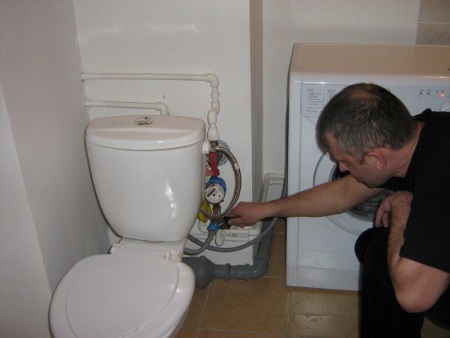Connecting the washing machine to the water supply and sewerage with their own hands
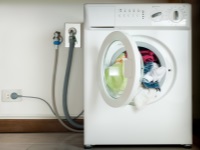
After selecting the desired model of washing machine and bringing it home, every owner of this equipment has the task of installing the new unit in a suitable place, and then connect the machine to the utilities.
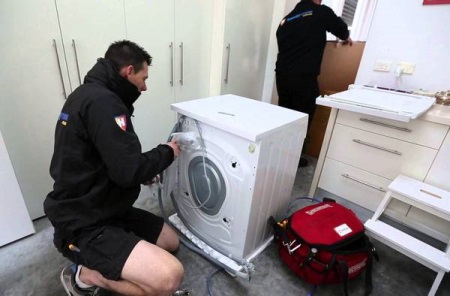
Installation location
The question of where to install the machine should be considered long before you buy it. The most common and frequently used option is to put the machine in the bathroom. It is chosen in most cases. However, owners of tiny bathrooms often decide to install the machine in the kitchen. These options are approximately equal in complexity, since access to plumbing and sewage will be free and in the bathroom, and in the kitchen.
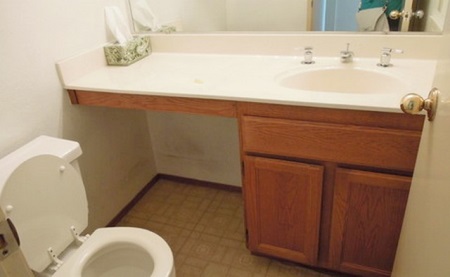
Much less often the technique is installed in the hallway, because in this case it is required not only to allocate space for the machine, but also to take out communications, which can be difficult. A compact machine can also be installed in the toilet, organizing the drain into the toilet.
Preparatory phase
Before you take up the connection of the washing machine to the communications, you need to remove the packaging from the technique and remove the parts that held the elements of the machine during transport. We are talking about bars, bolts and other fasteners. Without their removal the machine can not be switched on, as it can lead to damage to the drum and the failure of the equipment.
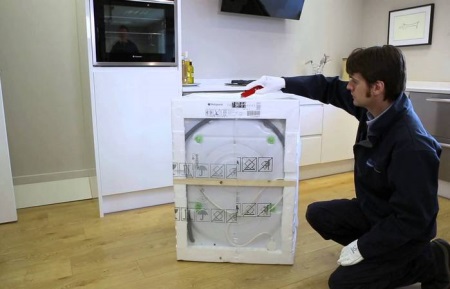
After unscrewing the shipping bolts, plastic plugs are inserted into the holes left after them. Do not forget to also put all the removed parts together in one place in case you have to go to the service.
How to connect to the water supply
To carry out this stage of the installation of the washing machine, you should prepare flexible hoses and rubber gaskets to seal the joints. You also need to make sure that there is sufficient pressure in the pipes and that the water is clean.
If the water is dirty, you should install a cleaning filter, and if the pressure is insufficient, use a booster pump.
Connecting the technique to the water supply can be done in two ways:
With the use of a faucet, into which you cut a tee. This way you can quickly connect the technique, but this method is often chosen as a temporary option. For such a connection you need a hose of sufficient length. If the washing machine is installed in the same room as the toilet, the connection is possible to the hose through which water flows into the cistern.
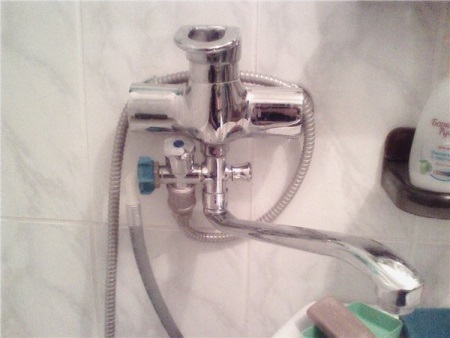
With a separate valve. In the selected section of the water pipe should be threaded, and then install the valve. In this case, both crimp socket and fitting can be used. In this case, the water must be shut off after each washing process. With such a connection, it is especially important to install a protective strainer that prevents mechanical particles from getting inside the machine. This filter should be cleaned regularly.
See the video below for a visual presentation of this connection process.
How to connect to the sewer
The organization of water drainage from the washing machine is carried out taking into account the following nuances:
If the machine does not have a special non-return valve, thanks to which water passes only in one direction, it is necessary to take into account when installing the machine the manufacturer's recommended level of placement of the discharge hose. Data on the maximum and minimum values of the position limits of the spigot should be consulted in the manual.
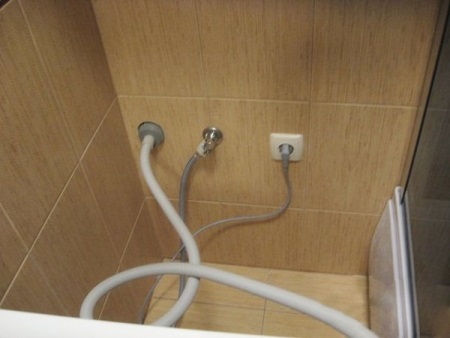
The easiest way to organize the drain is to lead the water into the bathtub. However, fixing the drain hose on the rim of the bathtub is not considered the best option, as an accidental displacement of the spigot will lead to water pouring out on the floor. It's best to arrange a fixed drain, where you won't have to worry about the hose and the risk of flooding the floor of the room.
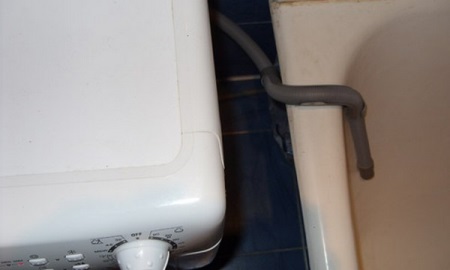
For a more reliable drain to connect the appliance drainage system to the sewer pipe, you need to buy a separate siphon with an outlet located above the elbow, designed specifically for the washing machine. This connection variation will eliminate the risk of leaks and ensure reliable water drainage.
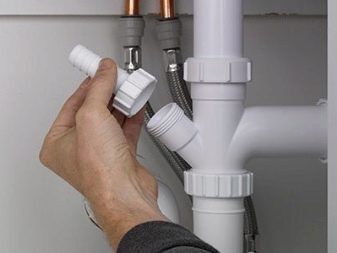
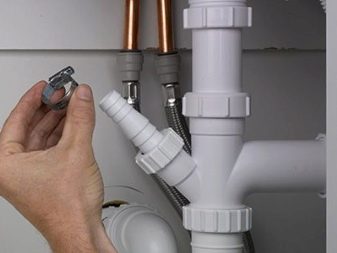
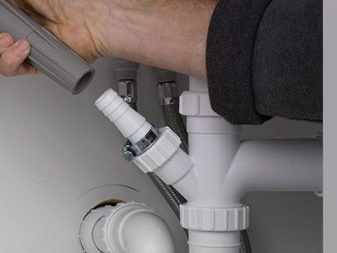
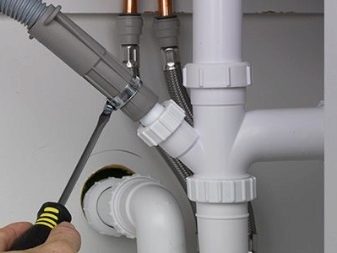
If the sewer pipes are more than 4-5 cm thick, it is possible to lead the water from the washing machine directly into the drain. In this case, be sure to use a sealant.
After connecting the machine, be sure to inspect the outlet hose along its entire length to avoid kinks. If it is necessary to connect the discharge hoses, for this purpose use adapters, which have clamps.
Other installation steps
When the work on the organization of the diversion and inflow of water into the washing machine is completed, it is necessary:
- Align the position of the technique, using the level. Thanks to such actions, the vibration at work will be minimal. If the floor at the place of installation of the machine is uneven, it is necessary to twist the adjustable legs. The option of using supports made of wood, linoleum or other materials is undesirable. After the feet are tucked in, you should check how stable the machine is. To do this, press a little on the corners of the machine from above. If the machine tilts, continue adjusting the feet.
- Connect the appliance to the mains. To do this, it is important to ground the switchboard, plug the appliance into a 3-wire outlet, and thoroughly insulate its ground wire.
- Turn on a test wash and evaluate the operation of the machine. Everything is fine if the tank fills with water in the right amount of time and you don't see any leaks. Next, the drum will start spinning, and after 5-7 minutes of typing, the water will begin to heat up. After the program is completed, the water will drain, and there will be no extraneous sounds inside the appliances.
